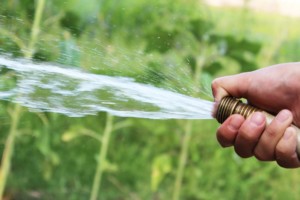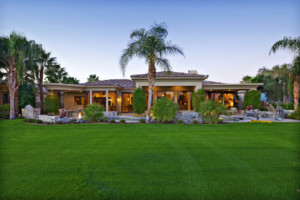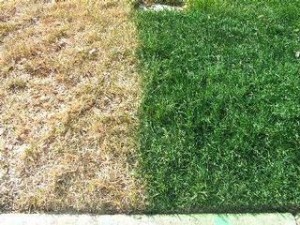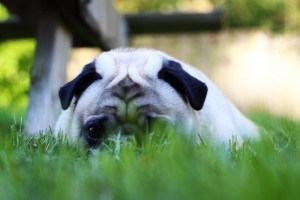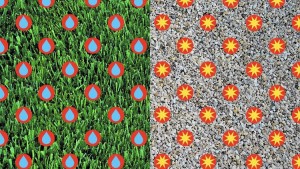May
Summer Lawn Preparation

Is your Lawn Ready for Summer?
Now that the clouds of winter have parted and Spring has arrived, it’s time to start preparing your lawn for the imminent heat of summer. If you haven’t already started your seasonal spring cleaning, then your lawn is the best place to start. The secret to keeping your lawn lush and green throughout the summer lies in the lawn care techniques you implement now.
Don’t risk the chance of sparse, unhealthy and patchy grass by not taking the simple steps needed to transition your lawn for the summer. Instead take the time to cultivate a resilient lawn that can withstand the effects of the sun and heavy foot traffic by following these steps. Read the rest of this entry »
Comments Off on Summer Lawn PreparationApr
Tips for Watering Sod Wisely
Water Wisely
Everyone wants a lush, green lawn! But not everyone knows the proper maintenance procedures to follow to achieve such a look. One of the biggest factors in keeping your lawn healthy and green is water. Luckily, our sod and lawn care experts have the exact tips you need for watering sod wisely!
Before we begin, keep in mind that the amount of water you should give your lawn depends on the age of your sod. You would not water new sod the same way in which you water established turfgrass. Also, we’d like to remind you that the type of sod you’ve installed in your lawn will determine the type of watering schedule to abide by.
For instance, warm season and cool season turf grasses need different amounts of sunlight and water to grow and thus need to be tended to differently. However, there are still some general tips and guidelines for watering that all lawn owners should follow. Read the rest of this entry »
Comments Off on Tips for Watering Sod WiselyDec
Winter Watering Schedules for Arizona Sod
Our temperatures have cooled down and winter is finally here. Fortunately for those of us living in Arizona, winter still means gorgeous, sunny days and a lush green lawn. However, we can (and should) adjust the amount we water our grass at this time of year. At West Coast Turf/Western Sod we offer these winter watering tips for Arizona sod for our climate, defined by days with temperatures less than 90 degrees so sorry to those on the East Coast who may be reading about our “harsh” winter temps!
Comments Off on Winter Watering Schedules for Arizona SodNov
Fall California and Arizona Lawn Tips!
It appears fall is never going to arrive as we’ve hit 90+ degrees twenty-three days in a row in the Phoenix area. The nighttime temperatures have slowly begun to cool but surprisingly they have yet to fall into the optimum range to overseed. For those who may have thought they were too late to drop seed, you still have a couple weeks to get your lawn going. Most people have already overseeded their lawns so I want to give some tips to assist your ryegrass while your warm season grass continues to grow.
If you overseeded anytime during the month of October I’m sure your lawn looks absolutely beautiful right now. It’s important to keep in mind that some of your grass is probably bermudagrass that bounced back from being scalped. How could this happen you ask? With daytime temperatures in the 90’s and nights in the 70’s it has allowed for an extended growing season. Many people including our sod farms use a turfgrass regulator such as Primo prior to scalping to help keep the bermudagrass in check. While this does help with a lot of the grow back it can’t prevent everything from coming back to life. Now that the ryegrass is up and growing strong it’s also a good time to put down a first or second application of Primo or other growth regulator. These products will greatly increase the density of your ryegrass and keep the bermudagrass from growing back. Why do you want to keep the bermudagrass out? If the bermudagrass is actively growing it is preventing your ryegrass from filling in completely. This is usually first observed after the first frost and the lawn will have small quarter size dormant turf spots throughout the turf. This is not a big deal as the ryegrass will eventually fill it in but something to keep in mind.
Comments Off on Fall California and Arizona Lawn Tips!Oct
Sod Watering Tips for a Healthy Lawn
It goes without saying that maintaining a lush lawn requires regular care. However, there is a prevalent misconception about just how much water your grass needs to remain healthy and green. You may be surprised to find that your lawn requires less water than you might think. Watering requirements for newly planted sod are very different than more established sod watering. To ensure the healthiest lawn, follow a sod watering schedule determined by your location, season and time since sod installation.
Comments Off on Sod Watering Tips for a Healthy LawnAug
Preparing Your Lawn for Fall Transition
We’re halfway through August and the temperatures are still soaring well into the hundreds. As I sit here ordering my ryegrass seed for the farms I figured it was a good time to put out a short blog on preparing your lawn for the fall.
The hot/humid weather is ideal for warm season grasses, especially with sod in Arizona and California. If you had any weak areas in your lawn you saw one of two things happen over the last couple weeks. You either saw the weak areas begin to grow in size or you saw your problem areas fill in as the stolons moved across the open ground.
If your weak areas are getting larger you should take a close look at your irrigation system. Sometimes it appears sprinklers are getting great coverage but when you put out bowls to check for water volume you often find that area is being missed. One of the most common areas for this is right in front of your pop up sprinklers. That triangular spot right below the sprinkler is the hardest spot to cover on the whole lawn. The easiest way to fix this issue is to put in a dual spray nozzle. These cost around $3-$4 and can be installed in under a minute. Read the rest of this entry »
Comments Off on Preparing Your Lawn for Fall TransitionJan
El Nino, Drought, and Your Lawn
We have been hearing about El Nino for some time now and it’s finally upon us. To most of us it spells relief that the drought may finally come to an end. We have been battling one of the worst droughts in history the last few years, and snow and rain will allow many to breathe a sigh of relief. By no means are we out of the woods yet as a few days of snow and rain won’t take care of the problem. It appears the weather models will be correct for this spring. It’s going to be wet spring which will bring back a lot of landscape areas that were put into seasonal dormancy to save water.
As I drove into work this morning I saw two common areas that had their sprinklers running while it was raining. It has been raining for the last four days and it doesn’t appear to be letting up until the weekend. While none of us want to interfere, it is important to let your homeowners association or city know that water is still running in these areas. There is only so much water we can save at our residences, but there are others areas we can step in. Most parks have the irrigation clocks set to run daily, and there is not enough man power to check the areas daily or even weekly. One way to fix this problem is the addition of rain sensors or gauges that attach to the irrigation clock to shut off the sprinklers. I know we can’t go back and fix all the parks that were put in past years, but we can make sure that all new areas are doing everything they can to save water. The majority of people are extremely responsible users of water and we need to encourage others to also use water wisely. Read the rest of this entry »
Comments Off on El Nino, Drought, and Your LawnNov
Tips On Maintaining Your Non-Overseeded Lawn This Winter
As we move through the fall season many of you will choose the option to forgo overseeding this season to save some water. With the prime growing season behind us you’re going to start to see your lawn start to slow down. The days are becoming shorter and your warm season grass is starting to need less inputs. There are a couple areas where you can cut back this winter to save yourself money. I will go into detail what you need to maintain a non-overseeded lawn during the winter, and go briefly over an overseeded lawn watering and fertilizer schedule.
My first suggestion for those that will not be overseeding is to turn your irrigation clock off except on the day you will be watering. Having your lawn set up to automatically run certain days and times during the fall/winter will cause you to use much more water than your lawn can utilize.
Comments Off on Tips On Maintaining Your Non-Overseeded Lawn This WinterAug
The Drought and Your Grass. How to Have a Lawn and Benefit the Environment.
Let’s face it–there is little one can do to escape the oppressive August heat in Arizona and California. But, did you know your property with grass is a good 30 degrees cooler than your neighbors’ with rocks, and 50 degrees cooler than the ones with artificial turf? Natural turfgrass has some major benefits!
I thought I would start off today’s blog by giving you some light at the end of the dark tunnel we call “summer.” While we started the summer off with mild temperatures, they have quickly soared making it one of the hottest summers on record. In order to combat the temperatures most people try to stay inside or crank up their air conditioners, but what we should be doing is looking for ways to control the ambient temperature at our properties. Installing grass is one of the best ways for lowering the temperature around your house, and allowing you to stay cool when you’re out enjoying a beverage by the pool.
I know a lot of people are reading that first paragraph and saying we’re experiencing a historic drought–how can we put in a new lawn? Yes, we are experiencing a drought, but the media would have you believe all the water being used is by lawns and golf courses. How about hotels, pools, washing cars, long showers, fountains, air conditioners, increase in electricity usage, washing dishes, and on and on? It’s easy to blame turfgrass for using too much water, but we need to look ourselves in the mirror each day and realize all need to act responsibly during this drought. Some see grass as a luxury, and golf as a silly game that is using our water supply. What they don’t see are the positive effects turfgrass has on the environment.
Comments Off on The Drought and Your Grass. How to Have a Lawn and Benefit the Environment.Jun
“Don’t Gravelscape L.A.”
We came across this article that ran in the Los Angeles Times last weekend called Don’t Gravelscape L.A.
They make some GREAT points! Before you consider ripping out your lawn, please read this article and we bet you will change your mind! We are in a drought, and we need to be water savvy. But you can still have a lawn! Really!
People are starting to panic about their lawns. The Metropolitan Water District is adding $350 million to its lawn removal rebate program and homeowners are scrambling to rip out grass and replace it with something easy and oh-so drought tolerant — gravel or artificial turf. At least one lawn removal contractor promises to do it for free (the company cashes in the rebate).
Drought panic and rebates incentivize too many quick and dirty solutions for our water crisis. All over the city — and especially in park-poor areas, where postage-stamp lawns may be the only relief from pavement — we have to think before we act. Will exchanging a living, breathing yard for a bleak gravelscape save water? Some. But is it the only way? Is it the right way?
Before you call the gravel truck, here are a few things to consider.
Read the rest of this entry »

